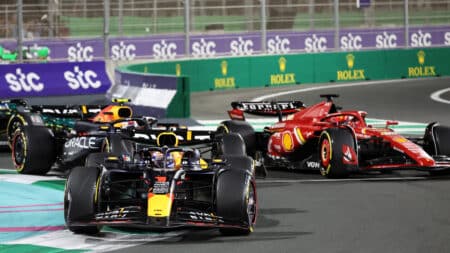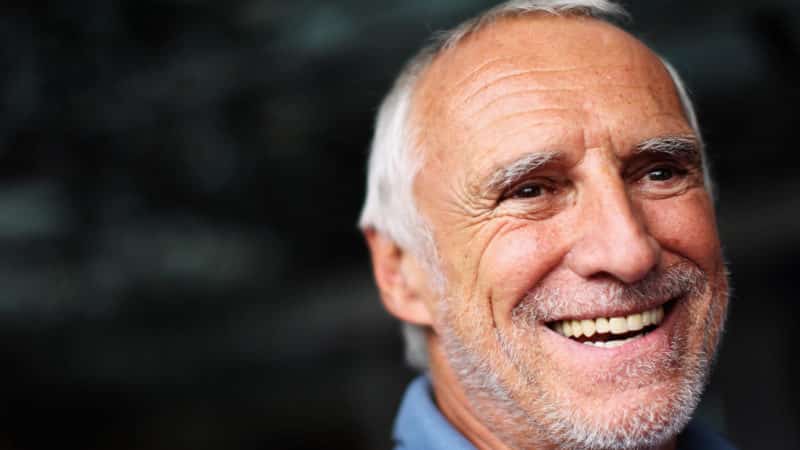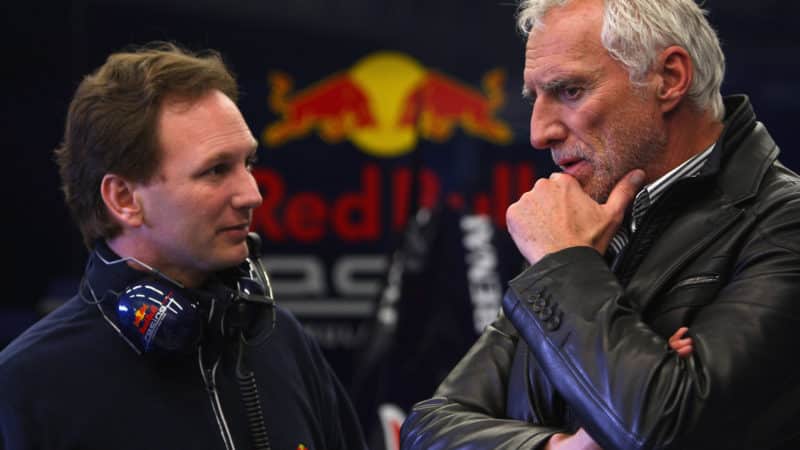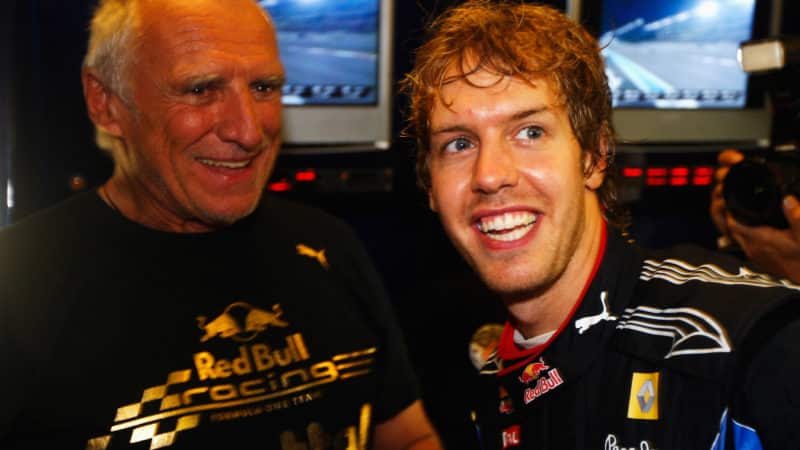
Which Red Bull will show up in Jeddah? - What to watch for at Saudi GP
Can Red Bull rebound from its poor Bahrain showing? And will it be Piastri or Norris leading McLaren's charge? Here's the five themes to watch for at the Saudi Arabian GP

Getty Images
Dietrich Mateschitz, the co-founder of Red Bull, who oversaw two Formula 1 teams, has died at the age of 78.
The news was announced ahead of qualifying for the United States Grand Prix, to a paddock where more than a quarter of all drivers owe their place to Red Bull funding in their junior careers.
“So many owe him so much,” said Red Bull team principal Christian Horner, who was appointed by Mateschitz to rebuild the team, bought from Jaguar in 2004, which has gone on to win six drivers’ championships.
“He is the reason that we are here. It was his passion for Formula 1. And his vision that is the reason that he has two teams in the Formula 1 pitlane.”
Mateschitz also bought the team that would become AlphaTauri in 2005, took Red Bull money to MotoGP and set up the Red Bull Rookies program to identify young riding talent.
Red Bull sponsorship can be found across the motor racing world, in series including DTM, NASCAR, WEC, WRC, Rallycross and Rally Raid.
Its largesse really did provide wings, along with wheels, engines and everything else needed to win championships.

Mateschitz with Christian Horner in 2009
Getty Images
“He is a remarkable man [in] what he’s done for so many, not just in Formula 1, but in the Red Bull business, across all the sporting platforms,” said Horner.
“He’s inspirational: he gave me a chance as a young guy. He backed me. And he gave so many people an opportunity. He encouraged you to [think] that nothing’s impossible, that nothing is insurpassable, and to follow your dreams.”
Max Verstappen spoke of his gratitude for the backing that Mateschitz had given him, while Mercedes boss Toto Wolff stood in admiration for his crowning business achievement, in creating a market that hadn’t previously existed.
Mateschitz was working as the marketing director for Blendax, a German cosmetics company when his life-changing idea hit him in 1982.
He had been travelling extensively in Asia, including Thailand, where he found bottles of Krating Daeng, a tonic to help keep workers awake, which helped him with his jet lag.
Later on, while sitting in the bar of Hong Kong’s Mandarin Hotel, the former Procter and Gamble salesman began thinking of how he could market the drink worldwide. It led him to approach its manufacturer, the Yoovidhya family.

A championship win with Vettel
Getty Images
With an investment of $500,000 each, he and the late Chaleo Yoovidhya formed the Red Bull company in 1984, the name taken from the English translation of Krating Daeng. Each man took a 49% stake, leaving 2% for Yoovidhya’s son.
“There exists no market for Red Bull,” said Mateschitz in the early days of the company. “But we will create one.”
His target market was young professionals looking for a way to stay awake and focused during long office hours, and saw extreme sports as the way to reach them and cement the brand’s rebellious, exciting image. In 1987, the drink launched in Austria, now carbonated and adjusted for European palates.
“In the very first year we started by sponsoring mountain-biking, snowboarding, paragliding and hang-gliding competitions,” he told The Independent in a rare 2005 interview.
Formula 1 was part of his plans from the very beginning. “Gerhard Berger was our first opinion-leader sportsman drinking Red Bull. He survived on it.”
Red Bull spread worldwide, taking more than an 80% share of the market that it created or, in the case of Britain, reshaped (before Mateschitz, energy drink equalled Lucozade).
It began sponsoring Sauber in 1995 and went on to take a 60% stake in the team, but Mateschitz fell out with the Swiss outfit in 2001 when Sauber put Kimi Räikkönen into a race seat over Enrique Bernoldi, who Red Bull was backing.

Max Verstappen and Mateschitz
Getty Images
By 2004, Mateschitz was a billionaire and ready to go a step further in his marketing. He didn’t just want to sponsor a Formula 1 team, he wanted full ownership. That was achieved with Red Bull’s purchase of Jaguar, which was looking for a way out of its racing disaster.
In business Mateschitz had a distaste of hierarchy. “We believe in individualism, we hate conformism, we believe in a civil courage,” he said. “We believe you have the responsibility to make up your own opinion.”
“There are terrible words in business like ‘chain of competence’. When three intelligent people discuss a matter, why do they need a line of command? We are not in an army court.”
He brought that approach to Red Bull, appointing young F3000 team boss Christian Horner and letting him get on with it.
Renamed Red Bull Racing, it lined up on the grid in 2005 with David Coulthard and Christian Klien at the wheel of the RB1.
A year later, Mateschitz joined forces with Berger again and the pair bought Minardi, which became Toro Rosso, bolstering the Red Bull driver development program run by Helmut Marko, as a first step in F1 for the brightest prospects.
By that time, one of Marko’s proteges was impressing in Formula 3, while Horner was talking to the pre-eminent car designer of the 1990s.
The latter, Adrian Newey, joined in 2005 and the former, Sebastian Vettel, began his first full F1 season with Toro Rosso in 2008.
It was a trio that would dominate F1, winning every drivers’ and constructors’ championship between 2010 and 2014.
By the end of that run, a young Max Verstappen was working his way up the ranks, courtesy of Red Bull backing, and the Mateschitz/Red Bill empire included the modern Osterreichring, renamed Red Bull Ring, complete with giant bull sculpture.
“Despite the shock, we’re going to do exactly what he would have wanted,” said Horner in Austin, “Which is to go out there and with his cars, do the very best that we can to try and close this constructors’ championship down.
“The big thing for him now is he’d want to see us go out there and give it everything. And, you know, we’ll be doing that today for him.”

Can Red Bull rebound from its poor Bahrain showing? And will it be Piastri or Norris leading McLaren's charge? Here's the five themes to watch for at the Saudi Arabian GP

McLaren's breakthrough in a near-four-year-old ruleset shows F1 rules convergence is a myth – just like Sebastian Vettel, Red Bull and Renault did in 2013, writes Mark Hughes

Madrid finally has a consortium to build the new Formula 1 circuit that will host the 2026 Spanish GP

Helmut Marko caused a stir after the Bahrain GP with his worries that Max Verstappen could leave Red Bull early. But how real are those fears?